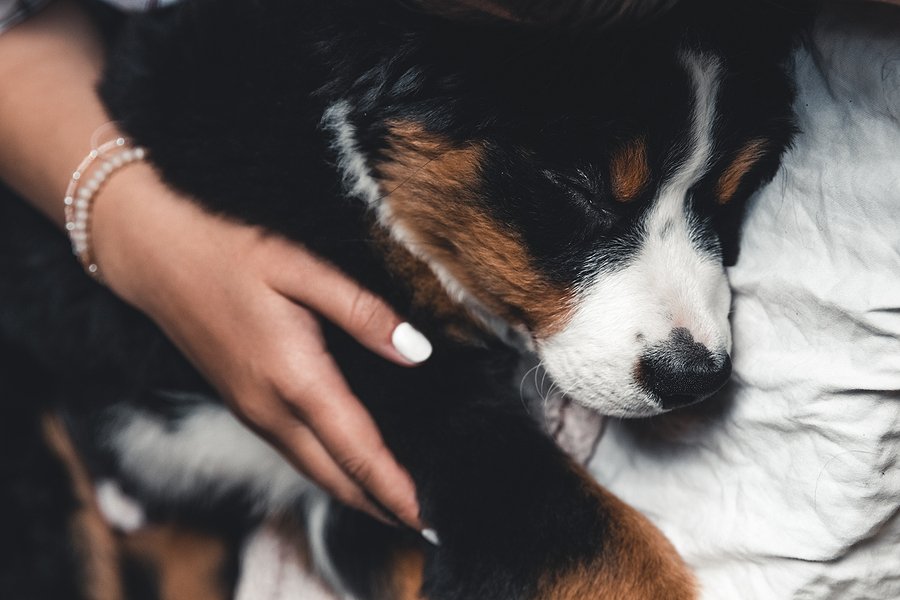Celebrate the Dog That You Have
Many of us have been there. The new puppy/dog doesn’t measure up to the last dog or the dog we have just isn’t what we were expecting.
He Should Just Listen To Me!
I often hear frustrated clients who don’t understand why the dog doesn’t just do what is asked of them. The owner feels that the dog “owes” them because they provide food, shelter, and love. The least the dog can do is sit, wait, and come when called, right?
Middle - The Safe Zone
While most people think of skills as human conveniences, skills are often taught and used to benefit the dog. Skills can give him information on what is expected, boundaries and safety.
Why’d You Teach That Skill?
Skills are essential! They give dogs tools to use in a complicated world and can actually give them more freedom because they’ll know how to navigate different environments and scenarios with you. They come to know what to expect and what is expected.
Need a Little Joy? Spend Some Time With a Dog; a Young Dog If You Can…
People lose their ability to easily find joy when way too soon. We become “grownups” and forget how to find or create joy within every day. Many dogs, on the other hand, find joy every single day for most of their lives.
Should Your Dog Meet Everyone on a Walk?
While it sounds like a friendly way to live and a great way to socialize your dog, is it a good idea for your dog to greet every person and dog you see on a walk?
Unfortunately, probably not. But why?
The Elusive Recall – How To Get It and How To Keep It
There’s nothing more joyous than a dog being able to run full out, off leash! But they need the skills to do so safely, especially a recall or response to their name.
The Ability To Just Be…
…and not fix anything. Most people want to fix things when they go wrong—solve the problem, make it better, get a plan together. But sometimes, there is no solution, or at least no immediate solution.
Not Listening or Not Understanding?
There are several reasons a dog appears to “not listen.” Notice the word “appears.” Dogs hear us but may not truly understand our request or may not have mastered the skill that we ask for.
Slow Down and Smell the Walk
We have schedules, places to be and places we are expected to be on-time. Getting the dog out to potty and for a bit of a walk can directly affect and even conflict with our daily schedule. So, this can become a tug of war—the dog pulls toward a smell, and we pull forward to finish the walk so that we stay on-task and on-time.
The Betrayal of Bad Behavior
We feed them, buy them toys and treats, pay for training and…
Tricked Into It!
Do you think training tricks is silly or just something that you do when you have some free time? Think again! Tricks are skills that can be used to increase focus, control energy and replace unwanted behaviors.
Don’t Be Your Dog’s Worst Boss
We’ve all had them; that nightmare of a boss that makes your job miserable. Bad behavior can happen on either side of the leash so give some thought to the worst boss you’ve ever had and make sure you don’t pass that on to your dog.
Switch!
Ever have to cross the street and walk on the “wrong side” where your dog is on the outside, next to traffic? Ever have to walk past another dog and wish your dog could be on the “other side” so that you’d have more room between you and the unknown dog? He can! Teach him to switch and you’ll have a great skill that your dog will see as a fun game.
Walk In…Like A Dog
We’ve all seen them. The dog who runs into every new place, tail up, face smiling. For anyone who has ever been nervous or anxious starting a new job, walking into a party late or stepping up to a start line when competing, this is quite phenomenal.
Does the Behavior Work?
Dogs constantly learn by discovering what behavior works. They test and eliminate and add to the list of what behaviors get them what they want. If a puppy is giving a treat every time she sits, she’ll quickly learn that the behavior pays off and will often offer a sit when unsure of what to do.
Why Did You Teach Your Dog To Sit?
“Sit” is probably the first thing you taught your new dog or puppy. You held a treat up over his nose until he lifted his nose up, lost his balance and sat. Once he learned that sitting predicted a treat, he sat all the time.
Breathe…Like a Dog!
Somewhere along the way, adult people forget how to breathe. We take short, shallow breaths from our chest. When worried or nervous, those shallow breaths become fast, making our breathing even worse. And when those short, shallow breaths are the result of any anxiety, our anxiety becomes worse as our breathing becomes worse. One feeds the other until we’re forced to just stop.
The Magic of the Growl
So, you had a fight with your best friend, and you haven’t spoken for a while. When you run into her at an event, she comes over to talk to you and you’re not ready. Do you tell her you’re not ready to talk, make a snide comment or just slap her across the face? Since you’re out in public, you probably start by asking her to give you some space, might escalate to making a comment that refers to your level of hurt after the fight and most likely don’t go as far as slapping her.




















